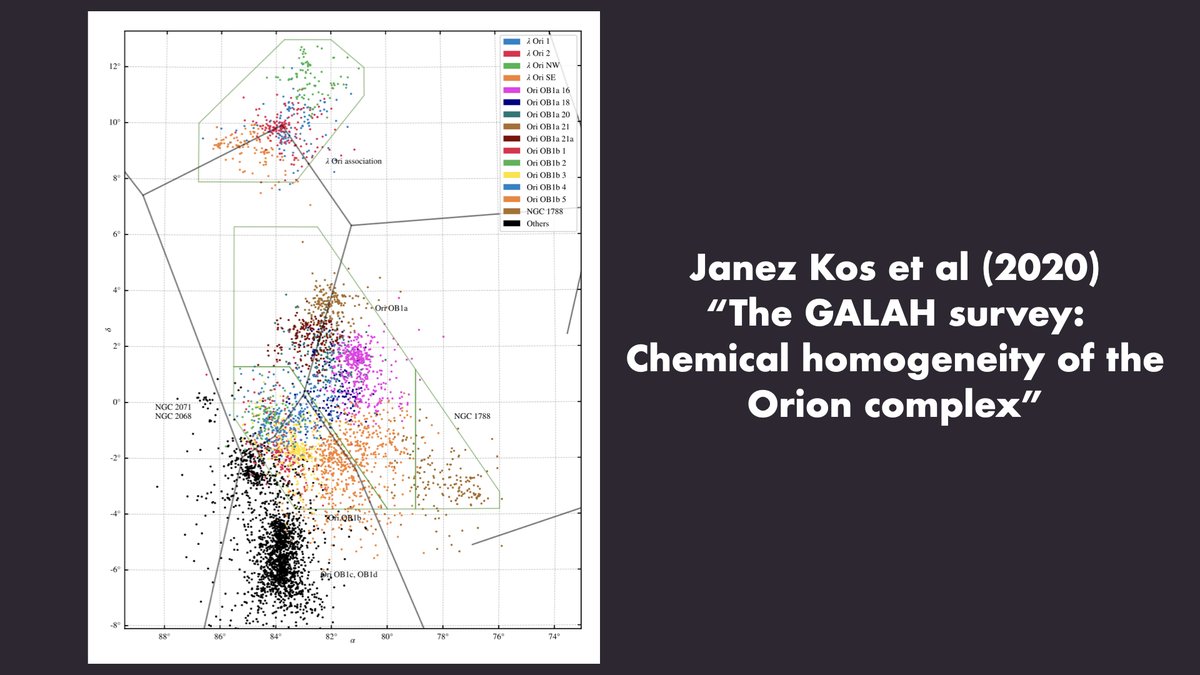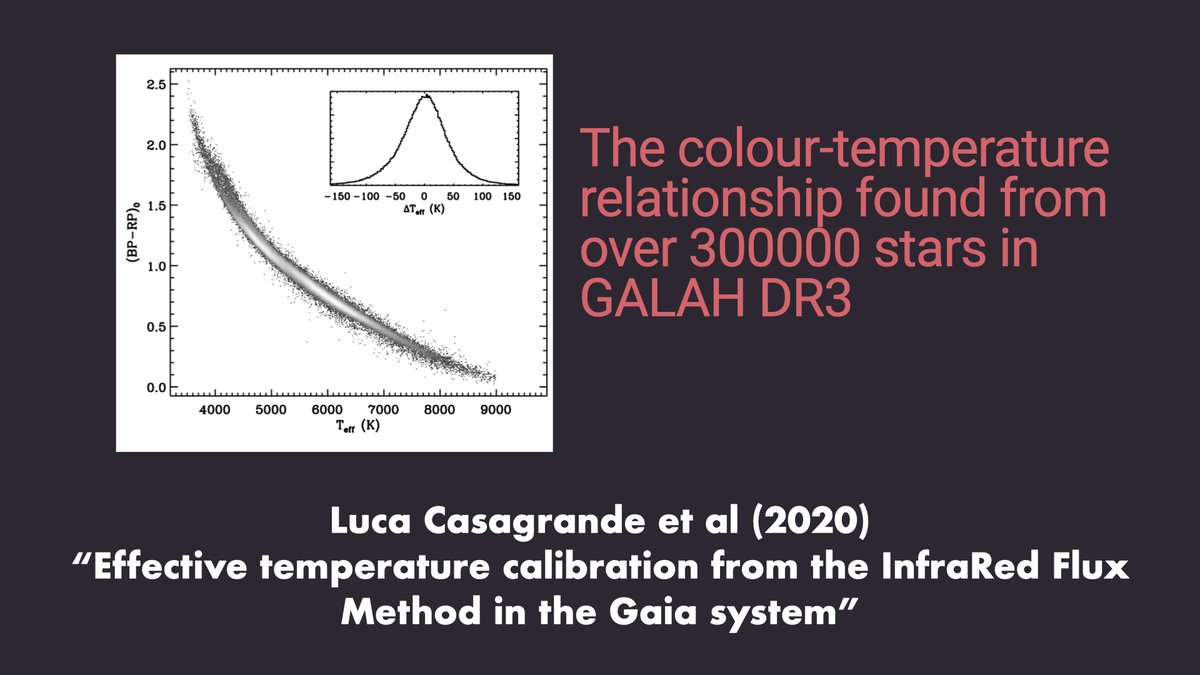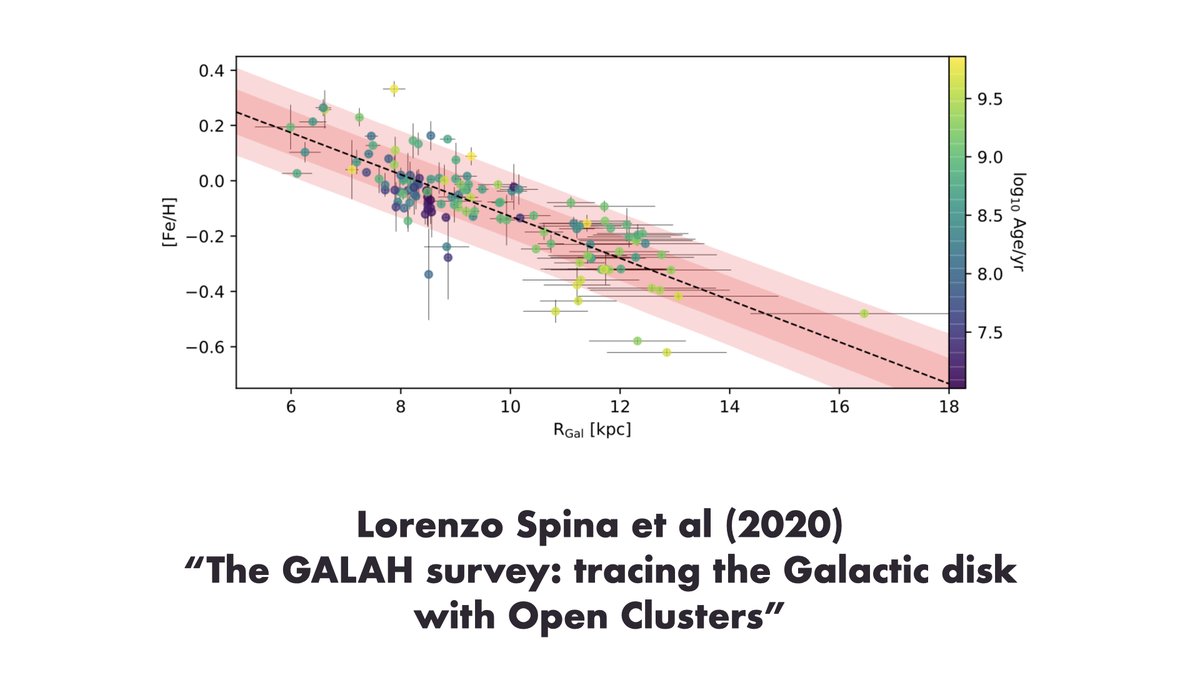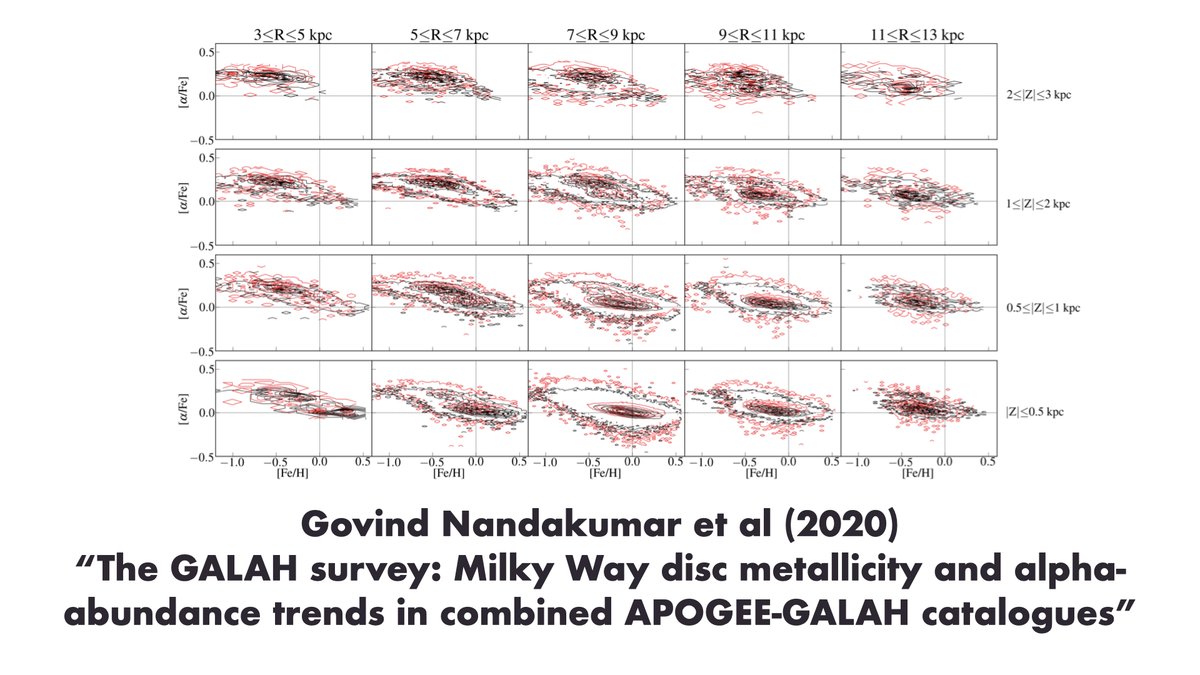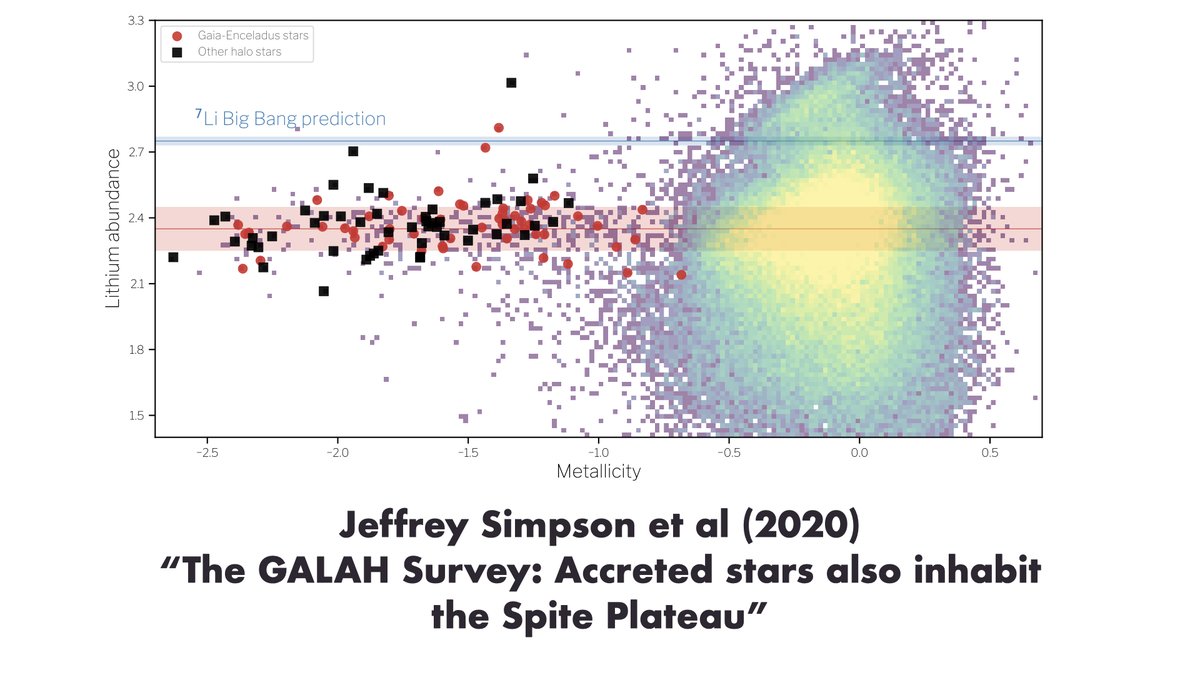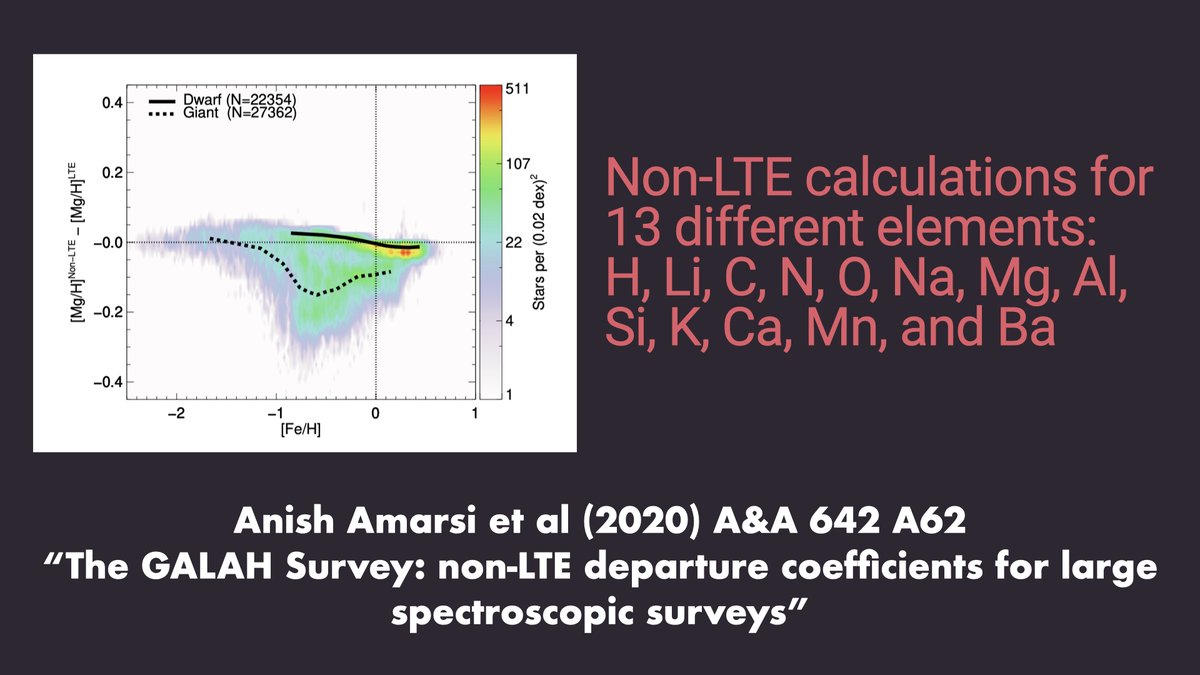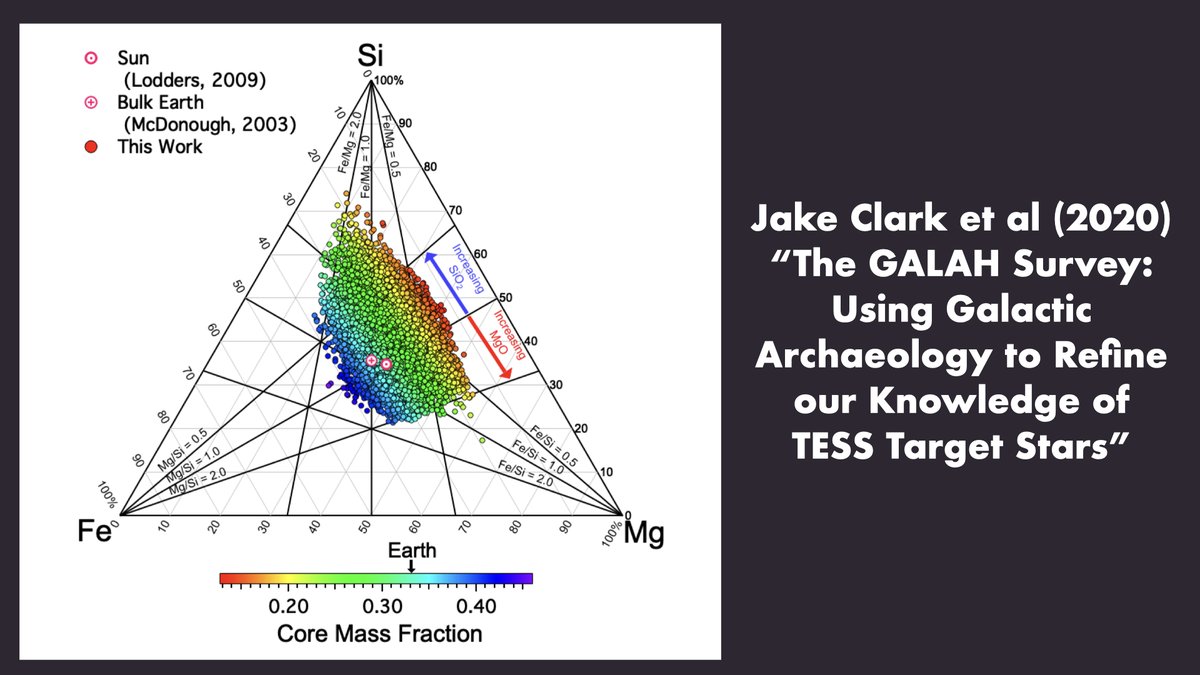Not only did we make GALAH DR3 public on 6 November, we also released a bunch of science papers. We thought this would be a great time to tell you all about them.
Like any good data release, GALAH DR3 has its documentation in order. Our overview paper is led by @astro_sven from @StromloANU, and it is important reading for anyone wanting to make use of our data.
https://arxiv.org/abs/2011.02505
https://arxiv.org/abs/2011.02505
The Orion nebula is one of the best places for an up-close view of star formation in all its complicated beauty. Janez Koz at @FMF_UL reports the surprising result that Orion’s older stars don’t seem to have polluted its younger stars at all: https://arxiv.org/abs/2011.02485
Although we  spectra, it is usually easier to get photometry of stars. Luca Casagrande ( @StromloANU) calibrated his InfraRed Flux Method using GALAH DR3 – this means temperatures and metallicities for 100,000,000 stars observed by @ESAGaia
spectra, it is usually easier to get photometry of stars. Luca Casagrande ( @StromloANU) calibrated his InfraRed Flux Method using GALAH DR3 – this means temperatures and metallicities for 100,000,000 stars observed by @ESAGaia
https://arxiv.org/abs/2011.02517
 spectra, it is usually easier to get photometry of stars. Luca Casagrande ( @StromloANU) calibrated his InfraRed Flux Method using GALAH DR3 – this means temperatures and metallicities for 100,000,000 stars observed by @ESAGaia
spectra, it is usually easier to get photometry of stars. Luca Casagrande ( @StromloANU) calibrated his InfraRed Flux Method using GALAH DR3 – this means temperatures and metallicities for 100,000,000 stars observed by @ESAGaia https://arxiv.org/abs/2011.02517
Spiral galaxies form a lot of open clusters, but few of them survive for long. @lorenzospina from @MonashAstro used 134 Milky Way open clusters that are still hanging on to pin down production rates of elements from oxygen to europium thru space and time: https://arxiv.org/abs/2011.02533
If you want to put our DR3 catalogue together with DR16 from our science cousins @APOGEEsurvey - and who wouldn’t?! - @StromloANU’s Govind Nandakumar has you covered: https://arxiv.org/abs/2011.02783
With a big enough data set, you can find dwarf stars from another galaxy right here in the Solar neighbourhood. @fadastra at @UNSWPhysics used stars from Gaia-Enceladus to prove that the cosmological lithium problem happens in other galaxies too: https://arxiv.org/abs/2011.02659
If you’re going to publish abundances for 30 elements in 600,000 stars, you want to do it right. Anish Amarsi at @UU_University keeps track of all the details in stellar atmospheres to make sure we’re accurate: https://doi.org/10.1051/0004-6361/202038650
Often in astronomy we’re working from partial information. @spacejayk from @usqedu made his first-author debut combining pieces from spectroscopy, @NASAExoplanets and geophysics to look at what planets are made of (and which planets aren’t really planets): https://arxiv.org/abs/2008.05372
If you missed it, you can find all the details of our GALAH DR3 in this thread  https://twitter.com/galahsurvey/status/1324544950973820929
https://twitter.com/galahsurvey/status/1324544950973820929
 https://twitter.com/galahsurvey/status/1324544950973820929
https://twitter.com/galahsurvey/status/1324544950973820929

 Read on Twitter
Read on Twitter